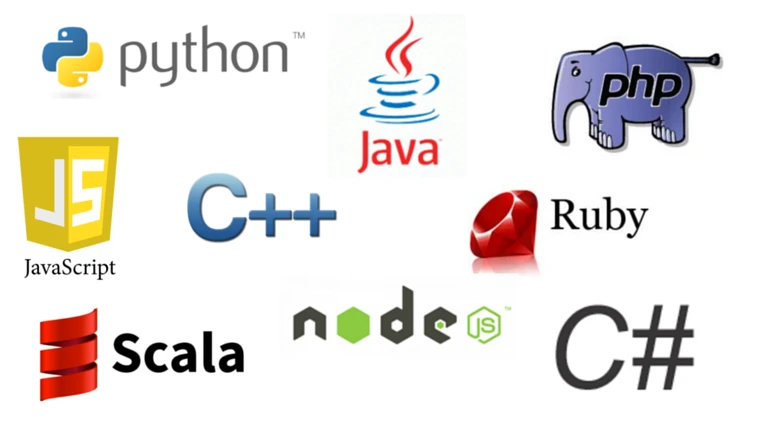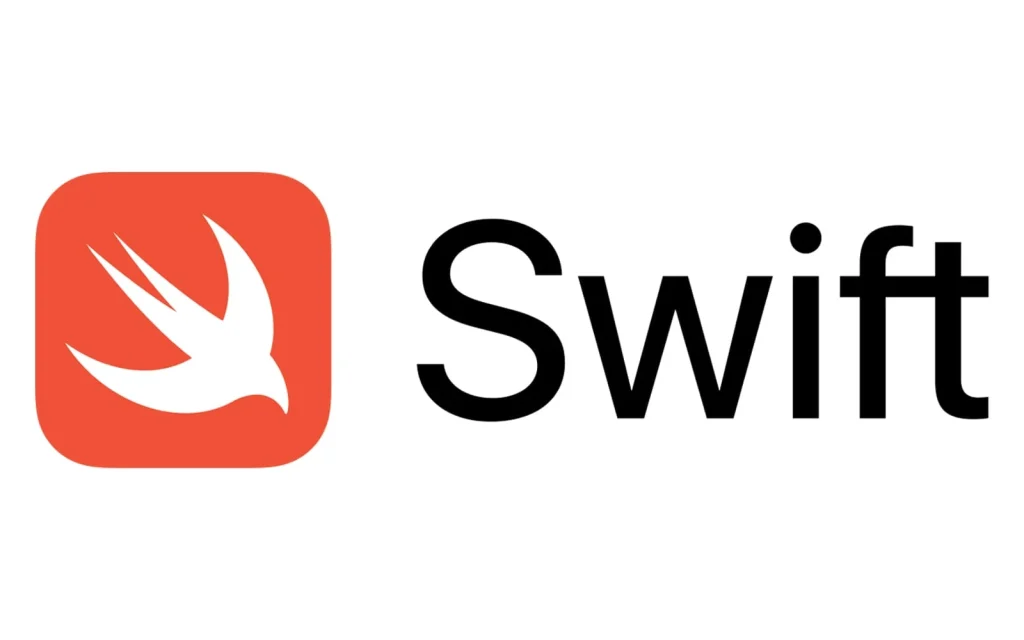Table of Content
Learn Why React Native vs Swift is a Trending Topic in the Dev Market
It is a known fact that software developers need to update their skills regularly. They cannot remain competitive in the market by working on same tools and technologies for years. The emerging trend of the tech world requires them to learn new things with the passage of time. Some of the modern programming languages like React and Swift are termed highly important for them. Both of these coding platforms are used extensively in the development of advanced software solutions. The question of React Native vs Swift is therefore becoming popular, as both of them are termed vital for developers.
Swift is a programming language that is usually associated with the development of iOS apps. It is a backend programming language that allows developers to create a whole structure of the app. On the other hand, React is a platform that allows developers to create native applications for both iOS and Android systems. This dual functionality makes React a highly popular language in the market. Developers like to use React to bring cross functionality in apps, so that clients demands can be fulfilled completely.
If you are a beginner having no knowledge how to get started with React or Swift, read this blog in detail. It will give you a brief idea how React and Swift can be used to build modern web applications efficiently. Furthermore, it will also define the React Native vs Swift comparison to let you know which programming language is better to offer software development services. Let’s start from the basics understanding why it is important for developers to acquire knowledge of new coding languages continuously.
Importance of Learning New Programming Languages

Learning new programming languages is crucial for developers for several reasons. Firstly, it broadens their skill set and enables them to tackle a wider range of projects. Different languages are suited for different tasks, and by mastering multiple languages, developers can choose the most appropriate tool for the job. This versatility enhances their problem-solving abilities and makes them more adaptable in dynamic work environments. Additionally, learning new languages exposes developers to diverse programming paradigms and methodologies, fostering a deeper understanding of computer science principles.
Secondly, staying updated with emerging languages and technologies ensures developers remain competitive in the job market. Technology evolves rapidly, and what may be in demand today could become obsolete tomorrow. By continuously learning new languages, developers demonstrate their commitment to professional growth and development, making them more attractive to employers. Moreover, familiarity with trending languages can open up opportunities to work on cutting-edge projects and contribute to innovative solutions.
Finally, learning new coding languages for app development promotes cognitive flexibility and creativity. Each language has its own syntax, semantics, and best practices, challenging developers to think differently and approach problems from various angles. This cognitive diversity fosters creativity and encourages developers to explore new solutions to old problems. Moreover, exposure to different languages exposes developers to different communities and cultures within the programming world, facilitating collaboration and knowledge-sharing.
What is React Native?

React Native, a cutting-edge JavaScript framework pioneered and backed by the tech behemoth Facebook, emerged with the primary goal of streamlining the development of cross-platform mobile applications. This innovative framework revolutionized mobile app development by harnessing the power of JavaScript, a versatile and widely adopted programming language. Unlike traditional approaches, React Native enables developers to write code once and deploy it across multiple platforms, eliminating the need for separate codebases for iOS and Android apps.
Leveraging the ubiquitous nature of JavaScript, React Native stands out as the premier choice for mobile app development, surpassing even Swift in terms of versatility and practicality. JavaScript’s inherent capability for code reusability empowers developers to share a significant portion—up to 70%—of their codebase across different platforms. This pivotal feature translates into tangible benefits, such as reduced development time and cost savings, as developers can focus their efforts on crafting a seamless user experience rather than wrestling with platform-specific intricacies.
The adoption of React Native and JavaScript signifies a paradigm shift in mobile app development, ushering in an era of enhanced efficiency and cost-effectiveness. With React Native’s robust capabilities and JavaScript’s flexibility, developers can embark on a journey towards creating innovative, cross-platform mobile applications that resonate with today’s tech-savvy consumers. By embracing this modern approach, organizations can navigate the complexities of mobile app development with confidence, poised to deliver impactful solutions that meet the evolving needs of their target audience.
Key Benefits of Using React Native
There are many advantages of using React Native for app development. It provides different types of features that helps developers to create quality cross platform applications as per the latest Latest software development trends in UAE. Here are some of the key development advantages you will get by using React Native.
Hot Reloading
Hot reloading, an invaluable feature in modern app development, empowers developers to witness real-time changes to their code reflected instantly in a preview window. This instantaneous feedback mechanism revolutionizes the development workflow, facilitating swift modifications and adjustments without the need for tedious manual refreshes or recompilations. By seamlessly integrating changes as they occur, hot reloading accelerates the iteration cycle, fostering a more dynamic and responsive development environment.
With hot reloading, developers gain unprecedented agility in fine-tuning their applications, enabling rapid experimentation and iteration. This iterative approach not only enhances productivity but also encourages creative exploration, as developers can effortlessly explore different design choices and implementation strategies. By bridging the gap between code modification and visual feedback, hot reloading empowers developers to iterate with confidence, ultimately leading to the creation of more polished and refined applications.
Modular Architecture
In React Native, the incorporation of a modular architecture introduces a sophisticated framework that meticulously partitions the functionalities of your program into dynamic and interchangeable modules. This architectural design not only enhances adaptability but also fosters seamless coordination between different components, promoting smoother integration and facilitating updates. By compartmentalizing various aspects of the application, developers gain greater flexibility in managing and deploying updates, ensuring that enhancements can be implemented swiftly and without disruption to the overall system.
The adoption of a modular architecture in React Native signifies a paradigm shift in mobile app development, underlining a strategic departure from monolithic structures towards a more agile and scalable approach. By decoupling distinct functionalities into standalone modules, developers can achieve a higher degree of granularity and granularity, enabling them to fine-tune and optimize each component independently. This granular control not only streamlines the development process but also facilitates maintenance and troubleshooting, as issues can be isolated and addressed with precision.
Streamlined Performance
React Native distinguishes itself in the circuit of mobile application development by leveraging native controls and modules, thereby facilitating the creation of apps that seamlessly integrate with the native environment of the target operating system. This integration is akin to a symbiotic relationship, wherein React Native infiltrates the core elements of the operating system to harness its full potential. By harnessing Native APIs, React Native orchestrates a harmonious fusion of web and native functionalities in desktop and mobile app development.
The utilization of native controls and modules in React Native not only enhances performance but also unlocks a myriad of possibilities for developers seeking to deliver a superior user experience. By tapping into the native capabilities of the underlying operating system, React Native empowers developers to harness the full spectrum of device features and functionalities, from hardware-accelerated animations to seamless integration with system services.
What is Swift?

Swift stands as a testament to modern programming ingenuity, crafted and meticulously maintained by the collaborative efforts of Apple’s dedicated team and the vibrant open-source community. Released in 2014, Swift represents a paradigm shift in iOS application development, offering a cutting-edge solution for crafting native experiences across the entire spectrum of Apple devices. As a multi-paradigm and general-purpose language, Swift embodies versatility and adaptability, empowering developers to tackle a diverse array of programming challenges with finesse and precision.
With its robust feature set and seamless interoperability, Swift emerges as the cornerstone of Apple’s ecosystem, serving as the language of choice for developing applications across various Apple-powered platforms. By providing developers with a unified and streamlined development experience, Swift aims to catalyze innovation and foster a thriving community of app creators. At its core, Swift is engineered to elevate the standards of iOS development services, offering developers a sophisticated toolkit replete with concise and expressive syntaxes that enhance productivity and facilitate rapid iteration.
Beyond its technical prowess, Swift embodies a commitment to accessibility and inclusivity, democratizing the process of iOS app development and inviting aspiring developers to join its ranks. By lowering the barriers to entry and providing comprehensive documentation and resources, Swift invites developers of all backgrounds and skill levels to participate in the vibrant ecosystem of Apple’s platforms. As Swift continues to evolve and mature, it remains steadfast in its mission to empower developers to bring their creative visions to life, shaping the future of mobile technology one line of code at a time.
Key Benefits of Using Swift
Swift provides great advantages in app development. It is used especially for iOS apps, as the language provides tons of features for quality development. Here are some of the key benefits you will get by using Swift for app development.
Scalability
The scalability of the language empowers developers to seamlessly integrate new features and effortlessly expand the capabilities of their applications. This inherent scalability not only facilitates the addition of fresh functionalities but also enables developers to fine-tune and optimize their applications as their needs evolve over time. By providing a flexible framework for growth and innovation, the language equips developers with the tools they need to stay ahead of the curve and deliver dynamic, future-proof solutions to their users.
Furthermore, the language’s scalability extends beyond mere feature addition. With the ability to effortlessly scale their applications, developers can tailor their solutions to meet the changing demands of their users and market dynamics. This adaptability not only enhances the longevity and relevance of their applications but also positions developers to capitalize on emerging opportunities and pivot their strategies with confidence.
Objective-C Compatible
Swift’s seamless interoperability with Objective-C represents a pivotal advantage, facilitating the integration of existing codebases with minimal friction. This interoperability empowers developers to leverage Objective-C’s extensive libraries and robust functionality while harnessing the modern capabilities of Swift to introduce innovative features and enhancements. By bridging the gap between the two languages, developers can maintain compatibility with legacy code while embracing the forward-thinking syntax and features offered by Swift.
Moreover, Swift’s compatibility with Objective-C not only streamlines the development process but also enhances the portability of applications across different platforms. By seamlessly transferring existing codebases and incorporating Swift for new features, developers can ensure a consistent user experience across diverse environments. This cross-platform compatibility not only simplifies maintenance and updates but also maximizes the reach and accessibility of applications.
Fast App Development
Swift’s expedited development process stems from its concise syntax and intuitive language design, which significantly reduces the time spent on coding tasks. By prioritizing clarity and readability, Swift empowers developers to express complex ideas with remarkable brevity, streamlining the creation of applications and accelerating time-to-market. Furthermore, Swift’s Automatic Reference Counting (ARC) feature emerges as a game-changer in memory management, seamlessly handling memory allocation and deallocation behind the scenes.
The efficiency gains afforded by Swift’s streamlined development experience extend beyond mere time savings, fostering a more dynamic and iterative development workflow. With less time devoted to writing and debugging code, developers can allocate more resources to refining user experiences and implementing innovative features. Additionally, Swift’s robust memory management capabilities eliminate the risk of memory leaks and performance bottlenecks, enhancing the reliability and stability of applications across diverse use cases.
React Native vs Native: Key Differences to Know About
When comparing React Native vs Swift, the key distinction lies in their respective suitability for cross-platform development and native iOS application development. React Native excels in enabling cross-platform development, while Swift is tailored for crafting native iOS applications.
Let’s examine the following criteria to evaluate React Native vs Swift and determine the most appropriate choice for your cross platform app development project.
Performance
The performance contrast between React Native and Swift hinges on various factors including GPU speed, CPU utilization, memory consumption, among others.
In performance tests, React Native outperforms Swift in memory efficiency and GPU acceleration, while Swift demonstrates superiority over React Native in terms of CPU utilization. Additionally, React Native offers the advantage of seamless integration of native code within applications and provides a diverse array of tools for accomplishing tasks.
Code Stability
Swift harnesses the full potential of the platform to construct native applications, boasting superior performance in handling demanding tasks and intricate visual effects when compared to React Native. Consequently, Swift enhances the stability of iOS applications, ensuring seamless operation.
While React Native maintains its position as a frontrunner among mobile app development frameworks, it is not the preferred choice for native app development. React Native primarily relies on internal APIs and libraries to execute applications seamlessly, potentially introducing additional layers in the development process and thereby compromising the application’s stability.
User Interface
Utilizing Swift, developers can effortlessly craft captivating user interfaces and visually stunning applications tailored for iOS platforms. Additionally, Swift developers have the option to utilize SwiftUI from the ground up, enabling the creation of entirely native experiences that elevate user engagement.
In contrast, React Native employs JavaScript libraries to construct user interfaces, allowing developers to seamlessly create platform-specific versions of components for an experience akin to native applications. Leveraging JavaScript and declarative UI, React components encapsulate native code and interact with native APIs, facilitating efficient communication with underlying platform functionalities.
Frequently Asked Questions
| Why developers like to use React Native? Developers favor React Native for its ability to build cross-platform applications using JavaScript, allowing for efficient code reuse and rapid development. |
| Why Swift is popular for app development? Swift is popular for app development due to its modern syntax, robust performance, and seamless integration with Apple’s ecosystem, enabling developers to create native iOS applications efficiently. |
| Which programming languages are termed best for mobile app development? Developers use different types of programming languages to build mobile apps. Some of the top among them includes Python, Ruby, React, Swift, PHP, and more others. |
Final Words
That takes us to the end of this blog in which we have discussed how React Native and Swift can be used for app development. Both of these languages are used commonly by developers to create different types of applications. The competition between React Native vs Swift is also quite stiff, because both offers quality features for software development. In this blog, we have highlighted the advantages of using both coding platforms, so that you can choose the right language depending on the requirements of your project.
Meanwhile, if you are looking for a company that could help you to build advanced React Native and Swift apps, get in touch with us today. We have got an experienced team of app developers that could help you to build quality apps as per the given demands.

Empower your digital journey with StruqtIO - Your dedicated partner for cutting-edge custom software development, innovation, and digital transformative solutions. Harness the power of technology to elevate your business and redefine your digital landscape today.


